

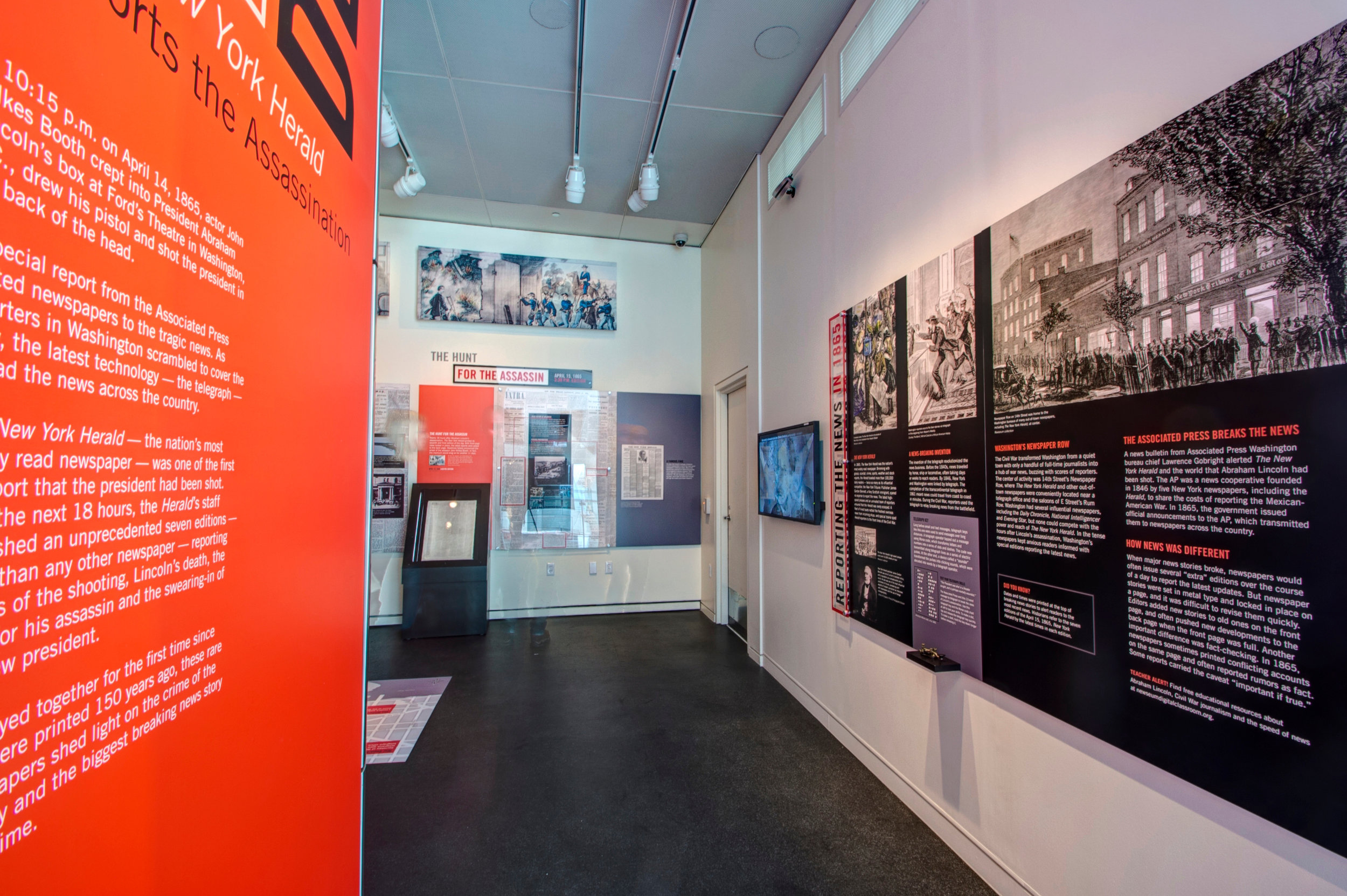
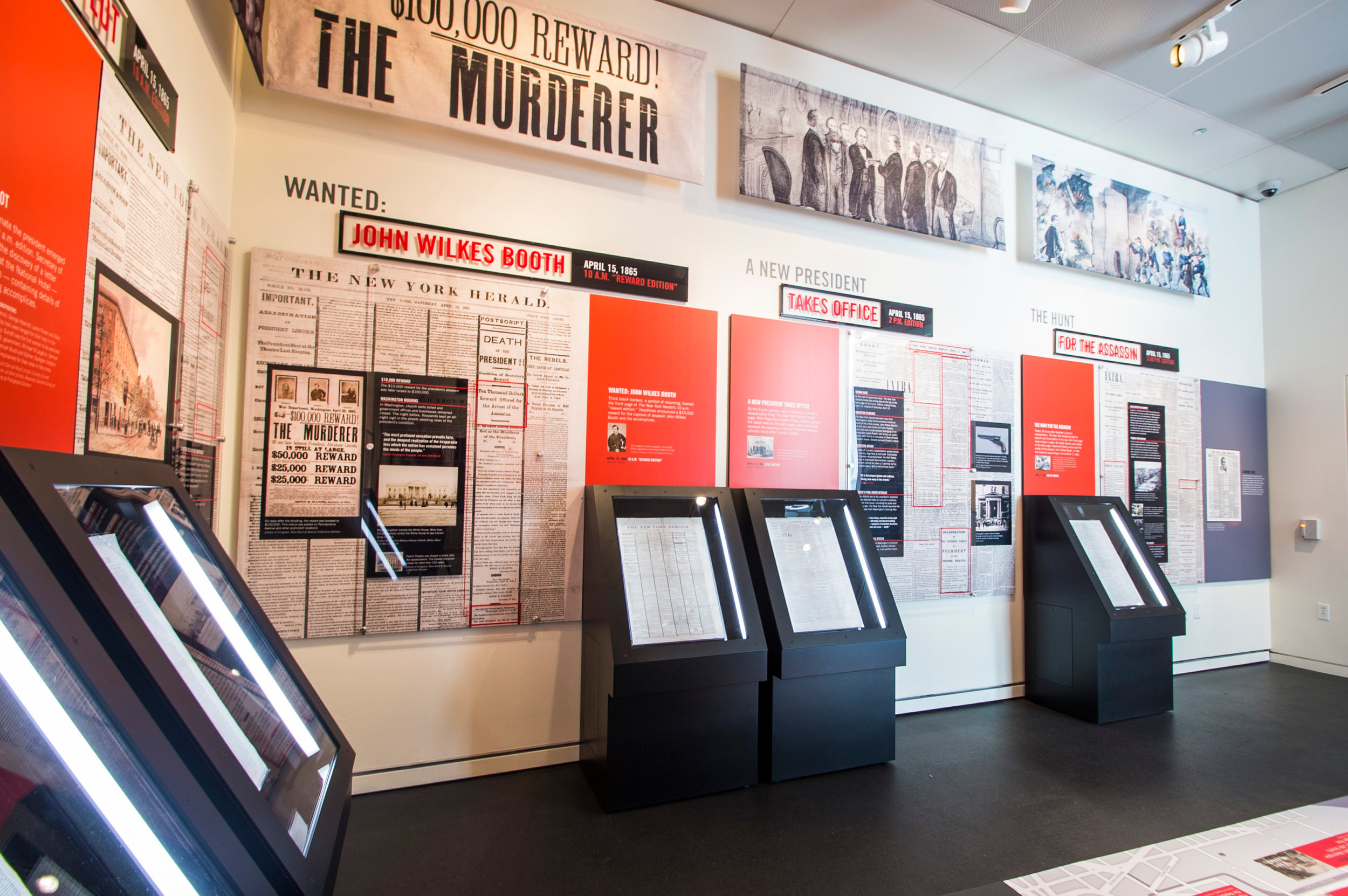








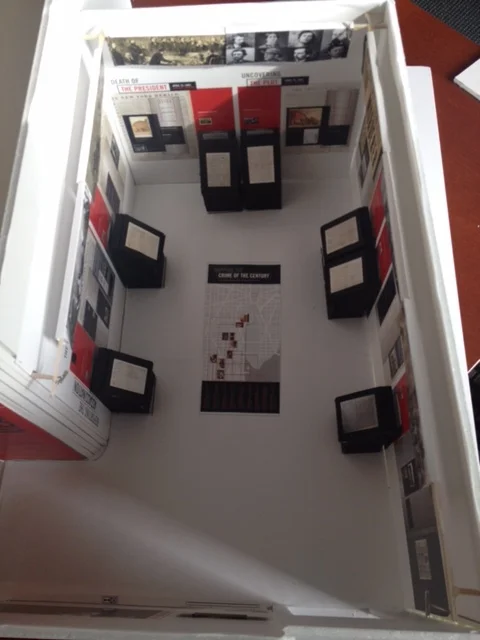
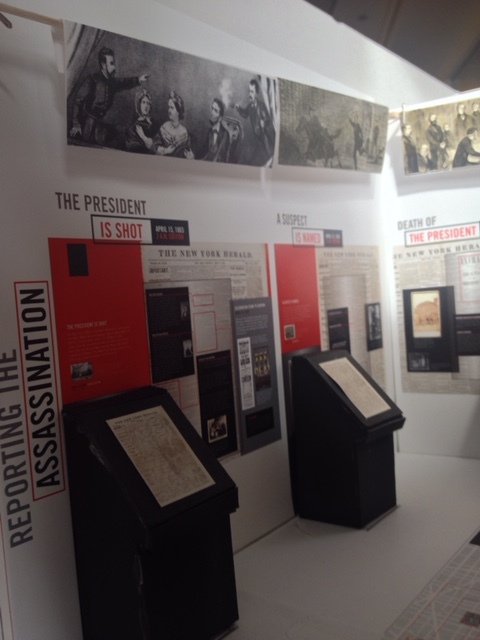


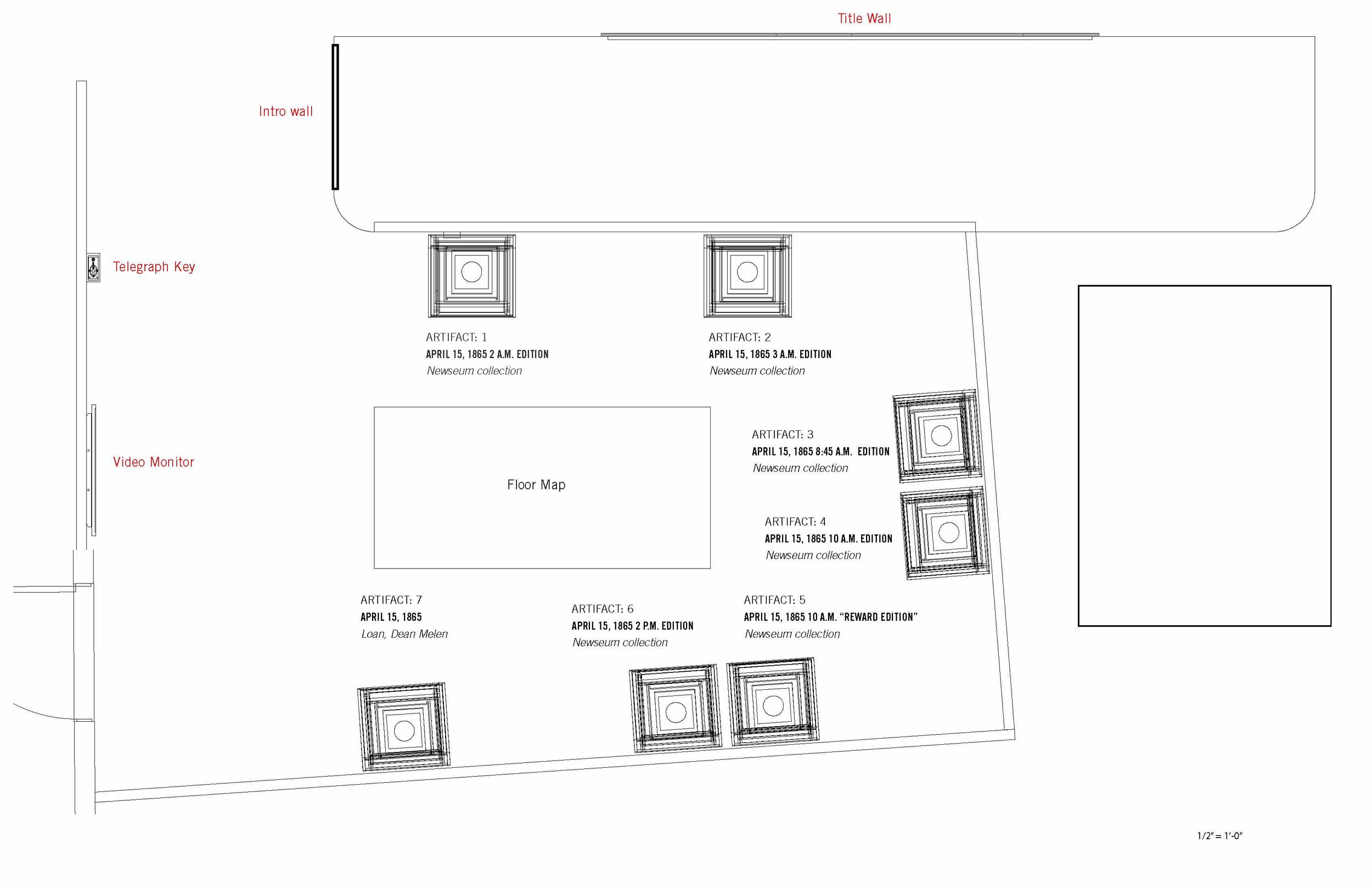








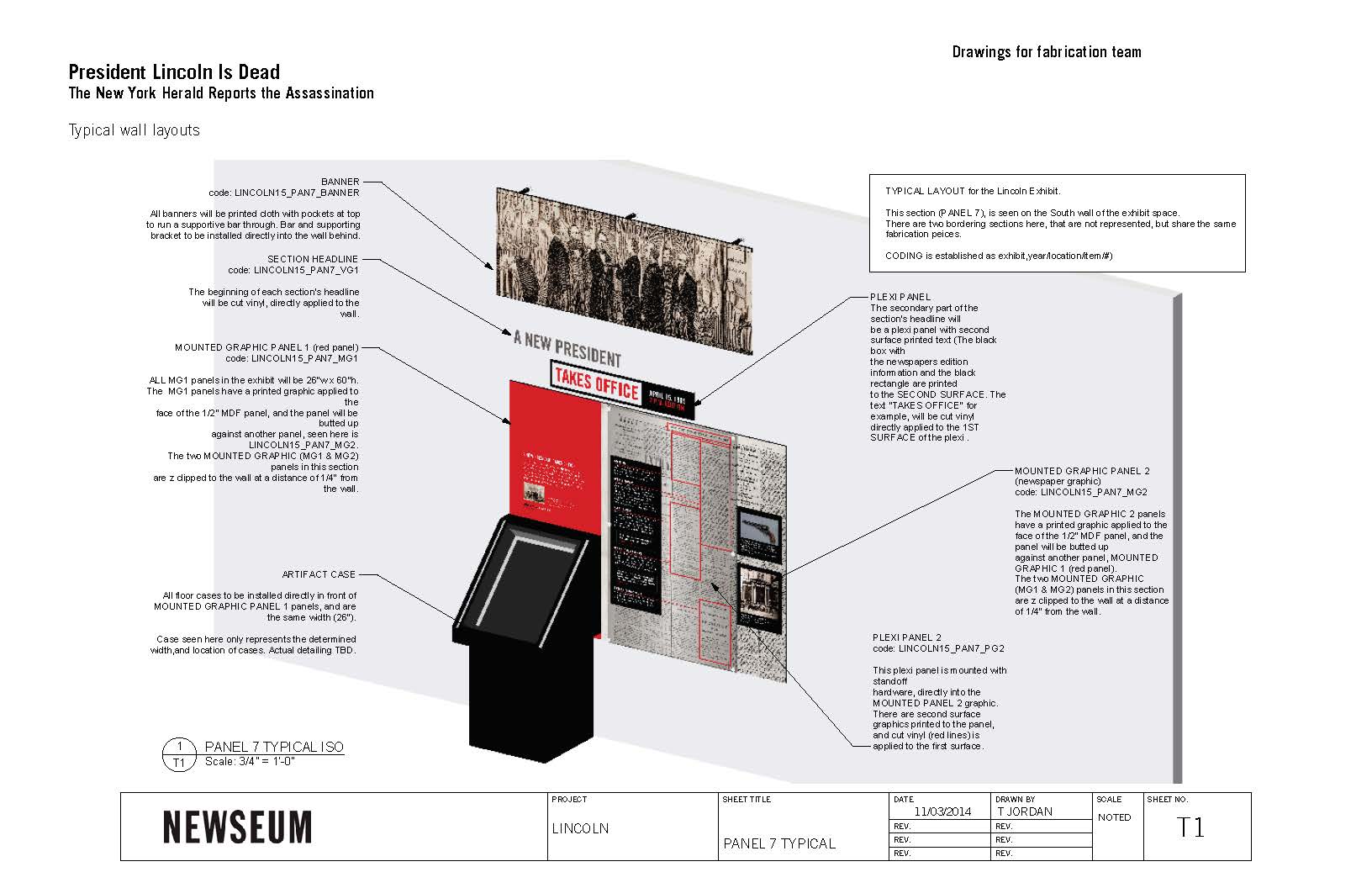




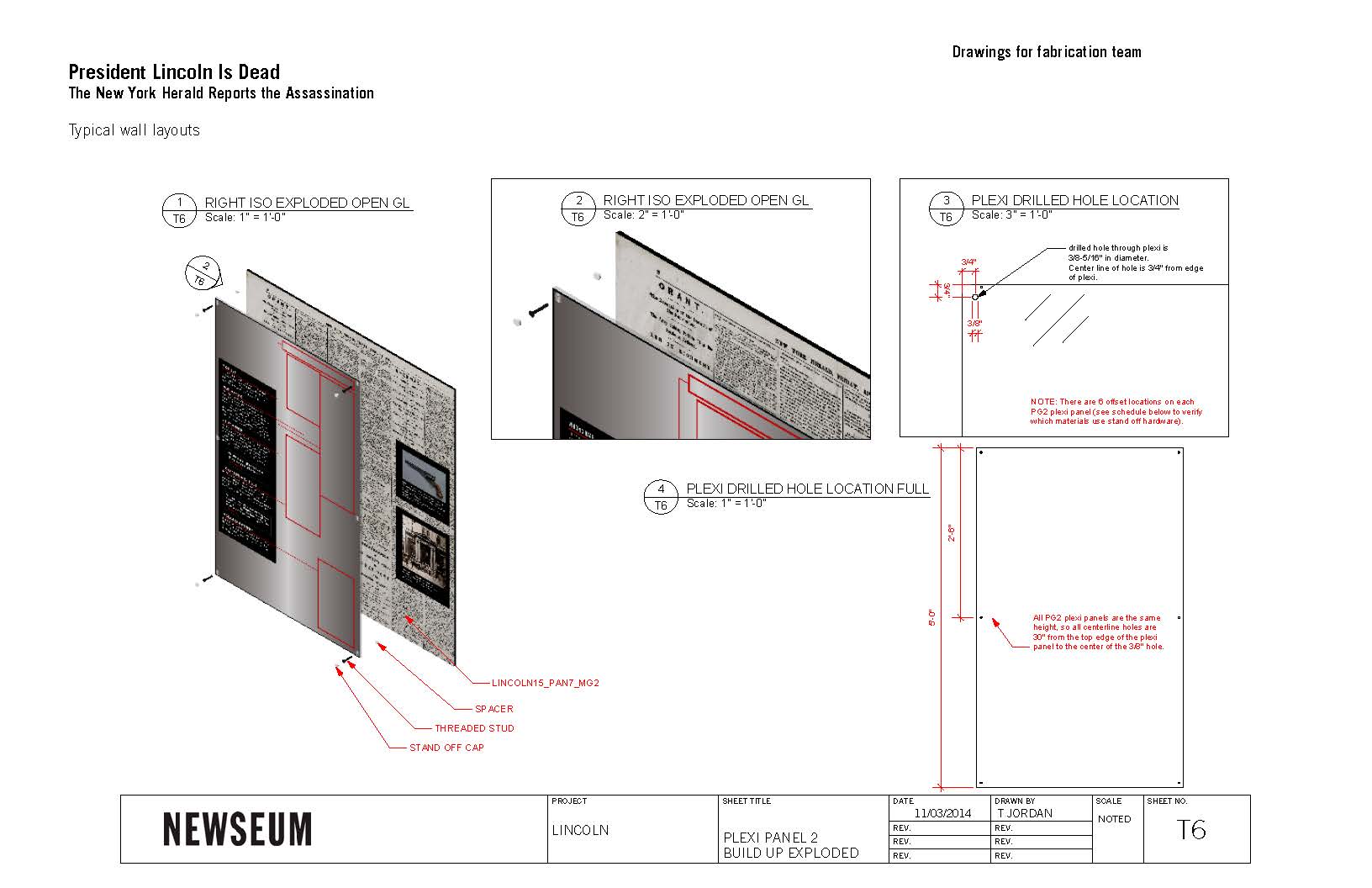

President Lincoln Is Dead: The New York Herald Reports the Assassination marks the 150th anniversary of the assassination of President Abraham Lincoln. The exhibit features an unparalleled collection of all seven editions issued by the Herald on April 15, 1865, chronicling the shooting of the president at Ford’s Theatre, his death, the hunt for his assassin and the swearing-in of the new president.
Displayed together for the first time since 1865, the collection begins with the 2 a.m. edition, which contained the first Associated Press report that Lincoln had been shot.
Responsibilities include: concept design, modeling, graphic design, promotional graphic design, fabrication drawings and exhibition installation.

The New York Herald as a graphic element is incorporated in each section, allowing the visitor to legibly read through the original content of the paper.
Because these large scaled environmental graphics would utilize a large amount of linear space, I developed a system of plexiglass panels that would be elevated above the graphic prints of the newspapers. Adding this additional surface area, was a way to include more content and organize information without impeding the legibility of the New York Herald graphics.
The red boxes that are seen in this photograph, are cut vinyl pieces that have been attached to the surface of the plexiglass. These boxes are used to encourage the visitor to explore certain parts of the underlying newspaper that are discussed in the exhibit's content. The box shape also echoes the shape used in the exhibit identity, further connecting the identity of the show to the core theme and organization of the exhibit content.
The use of the cut vinyl boxes that are attached to the surface of the plexiglass, which is elevated above the newspaper graphic panels, creates a pleasing visual depth to a fairly flat content space.

Interactive area: In the exhibit sidebar that describes the technology relevant during the time of the Lincoln assassination, is a telegraph key. Visitors are encouraged to interact with the object. Information describing the telegraph key's use and process are also included.

This scale model was constructed to show the intent of design regarding the development for the President Lincoln is Dead exhibition.

Influenced by the narrow text margins and bold borders of the original New York Herald's columns, I wanted to adapt this formatting into the exhibit's identity. By rotating the text in the logo, I was able to achieve formatting that resembles the newspaper's columns, and also used the thick border seen in the newspaper's columns as a device to highlight information seen throughout the exhibit, tying the exhibit's identity to the exhibit's core theme.

Attract Wall: Large format graphics displayed on the exterior of the exhibit to attract visitors to the exhibit space.

Title Wall: Introduction and summation of the exhibit's core theme and content.

Reporting the News: Sidebar; Section that discusses the technology used at the time of Lincoln's assassination to give context to the rapid circulation of newspapers used to update individuals about the Assassination. Seen in this section is a telegraph key for visitors to interact with.

Introduction, Section 1, Section 2: Each section includes an artifact case with the original edition of the New York Herald, a primary text panel summarizing the section's content, a large-format representation of the artifact and a signature image banner pertinent to the section's content.

Section 3, Section 4: Each section includes an artifact case with the original edition of the New York Herald, a primary text panel summarizing the section's content, a large-format representation of the artifact and a signature image banner pertinent to the section's content.

Section 5, Section 6, Section 7: Each section includes an artifact case with the original edition of the New York Herald, a primary text panel summarizing the section's content, a large-format representation of the artifact and a signature image banner pertinent to the section's content.

Floor Map: This top view of the exhibit space displays the floor map design of Washington D.C., that was used to show the locations of significant events of the Lincoln assassination.

Typical Wall Layout: This CAD drawing shows the exhibit build of all objects within one section of the exhibit. Materials and processes for fabricating these items are called out here.

Banner Detail: Detail drawing used to identify hardware and installation, of the signature image banners.

Section Header: Detail drawing that highlights materials and processes for developing the section headers in the exhibit.

Section content: Detail drawing showing the different materials and processes to display exhibit content in each section.

Section, Top view: Detail drawing that shows the materials and processes used to build the individual sections in the exhibit. This top view shows the intent of layering materials to add linear space for content in the exhibit.

Plexiglass and graphic panel, Exploded view: Detail drawing showing the intent of layering materials in the exhibit. Mounting and dimensional details are also included.
